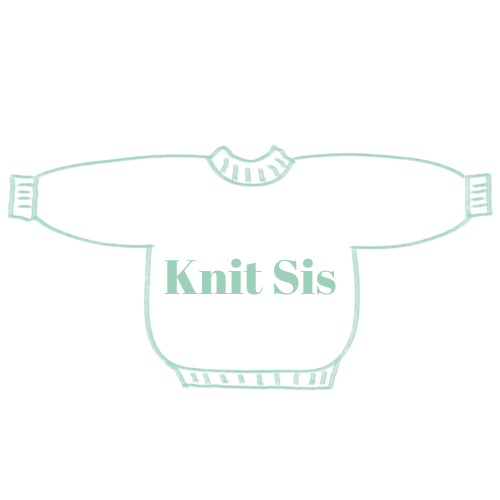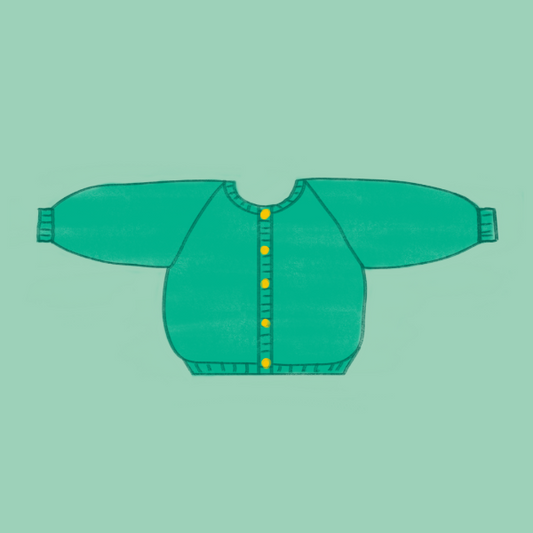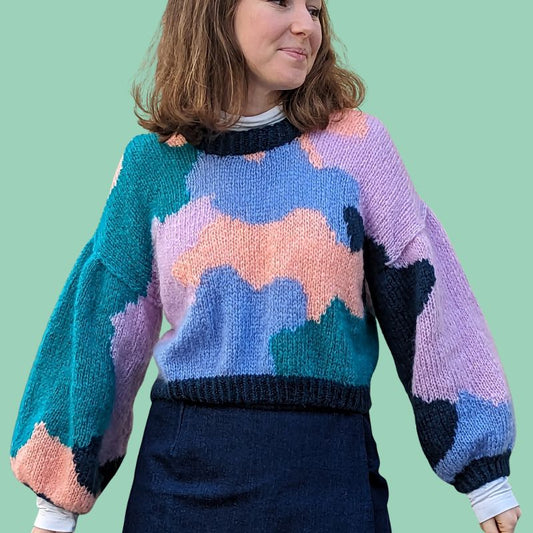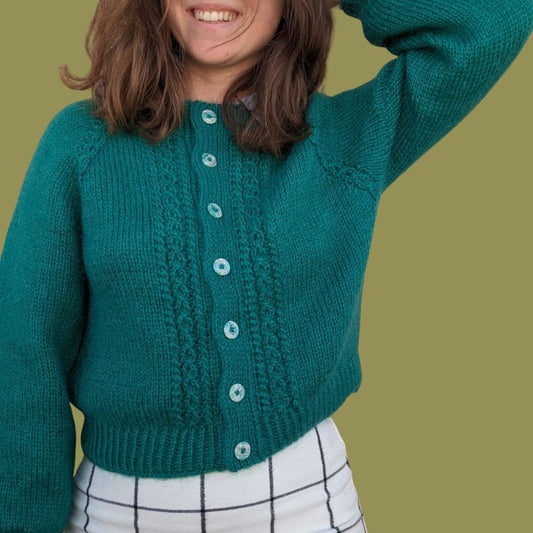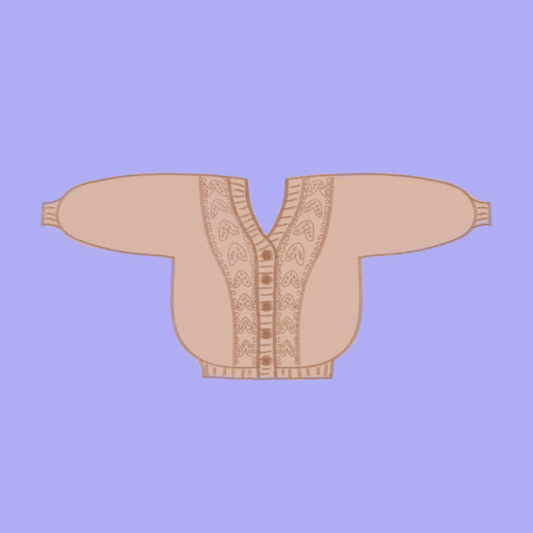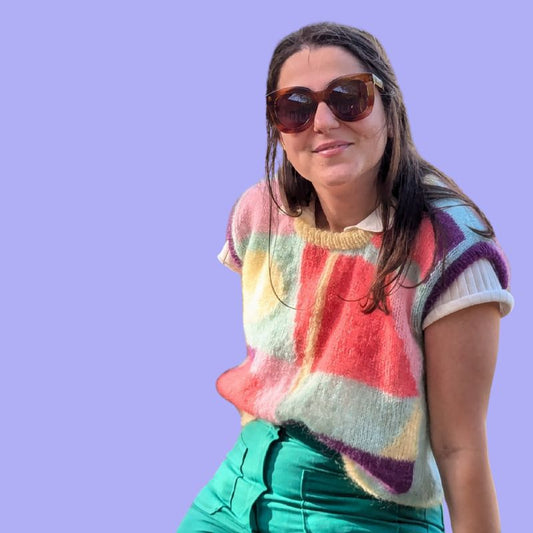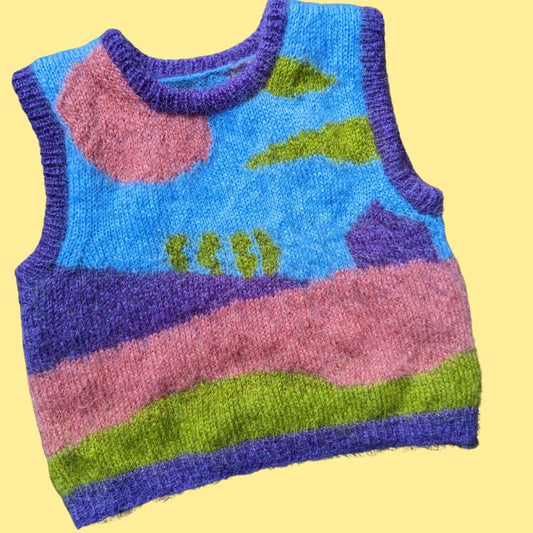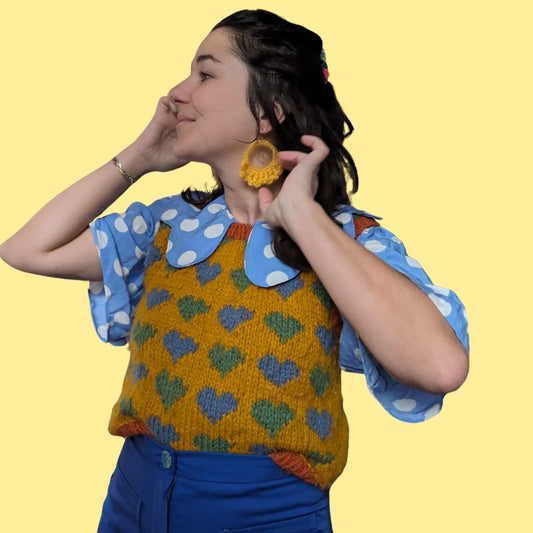Knitting an infinity scarf: techniques and styles to adopt
Knit SisShare
Knitting an infinity scarf: techniques and styles to adopt
Do you dream of a scarf that wraps around your neck like a hug, with no visible ends or seams? The infinity scarf (also called an endless snood) is perfect for that. In this article, we'll explore the different techniques for knitting an infinity scarf , the styles to choose depending on your skill level and yarn , and give you practical tips for successfully completing your first project.
You will discover:
▪️ Knitting methods for an infinity scarf (closed circuit, joining two strips, arm knitting…)
▪️ Recommended styles and stitches (garter stitch, lace, cables)
▪️ Tips for choosing length, width, and thread
▪️ Knit-sis pattern ideas that fit this project
▪️ and a mini checklist + inspirational ideas to keep.
1. What is an infinity scarf (endless snood)?
Quick definition / usable snippet
An infinity scarf (or endless snood) is a circular knitted tube, without free ends, which is worn in a double, triple or single loop depending on the thickness.
It differs from the traditional scarf by its "ring" side which does not come undone, making it more practical to wear.
1.1 Advantages of an endless snood
▪️ No dangling ends, less movement
▪️ Easy to wear (one size fits all)
▪️ It can be knitted seamlessly in the round
▪️ Refined aesthetics, “professional” finish
1.2 Disadvantages / Constraints
▪️ If it's the wrong size, it can be too tight or too loose
▪️ Depending on the technique, the joint will be visible if the finish is poor.
▪️ Some techniques (arm knitting, adding stitches) require planning
👉 Knit-sis tip : before starting, make a miniature mock-up to judge how the tube will "fall" on your neck.
2. Techniques for knitting an infinity scarf
Here are the main approaches we recommend, depending on your preferences, equipment and skill level.
2.1 Knitting in the round (circular) — the “cleanest” method
You cast on stitches onto circular or double-pointed needles, then knit in the round until you reach the desired length, seamlessly.
▪️ Advantage: no seams to join, pattern continuity
▪️ Important to note: the number of stitches should be a multiple of the pattern (cable, lace)
▪️ Tip: Use a circle start marker
2.2 Knit back and forth and then join the ends
A technique often used for beginners:
▪️ We knit a linear strip
▪️ The ends are closed with a seam (using invisible stitches)
▪️ We tuck the wires away
This method allows you to “work flat” if you are not comfortable with circular knitting.
2.3 Arm knitting
An express method where you use your arms as needles, particularly suitable for very thick wools.
▪️ Very quick, "cozy" result
▪️ Ideal for thick yarns / winter projects
▪️ Limited in detail or complex patterns
2.4 “Infinity Times N” Knitting (joining multiple rings)
A creative variation: knit several rings and interlace or link them to create a voluminous or multi-loop snood.
This can create a “thick, adjustable scarf” effect.
2.5 Mixed variants
For example, knit in the round for the majority, then make a flat, openwork "edge" section, or include a sewn-on decorative band.
3. Recommended styles and stitches for your infinity scarf
Depending on your skill level, the type of yarn and the desired effect, some stitches will be more suitable.
3.1 Simple & effective points (ideal for beginners)
▪️ Garter stitch : knit all stitches (or alternating stitches) — a classic
▪️ Stockinette stitch (all stitches worked in the round)
▪️ Seed stitch / rice grain stitch / moss stitch — soft texture
For example, the “seed stitch infinity scarf” is a recognizable and accessible pattern.
3.2 Openwork/Lace Style
Add holes or openings (dropped stitch, overcast stitches) to create lightness and elegance.
Caution: with a circular pattern, ensure that the repetition fits the tube.
3.3 Twists or embossed patterns
If you want a structured effect, you can add twists or embossed patterns.
But: allow for the "absorption" twist to "shrink" the width — leave some margin.
3.4 Stripes, color blocks or gradient
A great way to add visual movement without technical complexity — change color at regular intervals.
4. Dimensions, yarn selection, and project planning
4.1 What length, what width?
▪️ Typical width: 25 to 35 cm (or more, depending on thickness)
▪️ Circumference (tube length): 120 to 160 cm, or depending on the double/triple loop
▪️ Carefully check that the scarf is neither too tight nor too loose at the final size
4.2 Yarn Choice & Weight
▪️ Medium to thick yarn (DK, worsted, bulky) is often preferred for the wrapping effect
▪️ If using thin yarn, opt for multiple strands or a cast-on with more stitches
▪️ The regularity of the thread helps to ensure the regularity of the tube
4.3 Gauge & Sample
Always make a round sample if possible, or convert a flat sample.
Take into account the elasticity of the yarn.
4.4 Planning according to technique
▪️ For circular knitting, establish the pattern/repeat
▪️ For arm knitting, roughly calculate your arm span
▪️ For joining, use "edge" stitches to facilitate sewing or an invisible join
5. Step-by-step instructions: knitting your infinity scarf
Here is a general guide that can be used regardless of the technique:
Step 1: Cast on the stitches
▪️ In a circle: assemble the required number, checking that they are not bent
▪️ Flat: assemble to the desired width
Step 2: Knit according to the chosen stitch
▪️ Respect the pattern repetition
▪️ If stripes or color changes are involved, make the transitions cleanly
Step 3: Adjust if necessary
▪️ Check the “tube tension” from time to time
▪️ Check that the scarf goes properly around the neck
Step 4: Closure / Joining
▪️ In the round: continue until you reach the desired length, then fold over
▪️ Flat: sew the ends with invisible stitches (stitch by stitch, invisible stitch)
▪️ For arm knitting / variations: weave the rings or connect the tubes
Step 5: Finishing Touches
▪️ Tuck the threads in carefully
▪️ Block lightly (spray, stretch gently)
▪️ Check the joint, adjust if necessary
6. Knit-sis Inspirations & Suggested Patterns
To get started in style, here are some Knit-sis pattern suggestions that you can adapt into infinity versions, or parts of which can inspire tube styles:
▪️ Splashie — its color blocks can be redesigned for a continuous tube
▪️ Mondrian — a geometric game that can be transposed into a circular strip
▪️ Cardichou (The Cabbage Vest) — for practicing top-down circular tying (useful for a tube)
7. Quick checklist & common mistakes
✅ Key points / checklist
▪️ Choose the appropriate technique (round, strip + join, arm knitting)
▪️ Check that the number of stitches is compatible with the pattern
▪️ Create a sample
▪️ Allow margins on the length / width
▪️ Take care with the join (invisible stitching or neat folding)
▪️ Block lightly to soften and smooth
🔍 Common mistakes & how to avoid them
▪️ Tube too tight → cast on more stitches or use a larger needle
▪️ Poor visible seam → iron, undo and resew neatly
▪️ Unsuitable yarn → choose a regular yarn, avoid yarn that is too thin for a snood
▪️ Incorrect length calculation → test on yourself or on a mannequin
8. Conclusion
A carefully knitted infinity scarf is an elegant, comfortable, and unique piece. Choose the technique that appeals to you, adapt the style to the yarn and your skill level, and have fun creating your tube.
👉 Discover our knitting pattern collections
👉 Subscribe to our newsletter to take advantage of promotions on our Knit-sis patterns.
Happy creating, beautiful stitches, and may your tubes envelop you in softness ✨
With passion and complicity,
Lenny & Louise, your Knit-sis sisters
